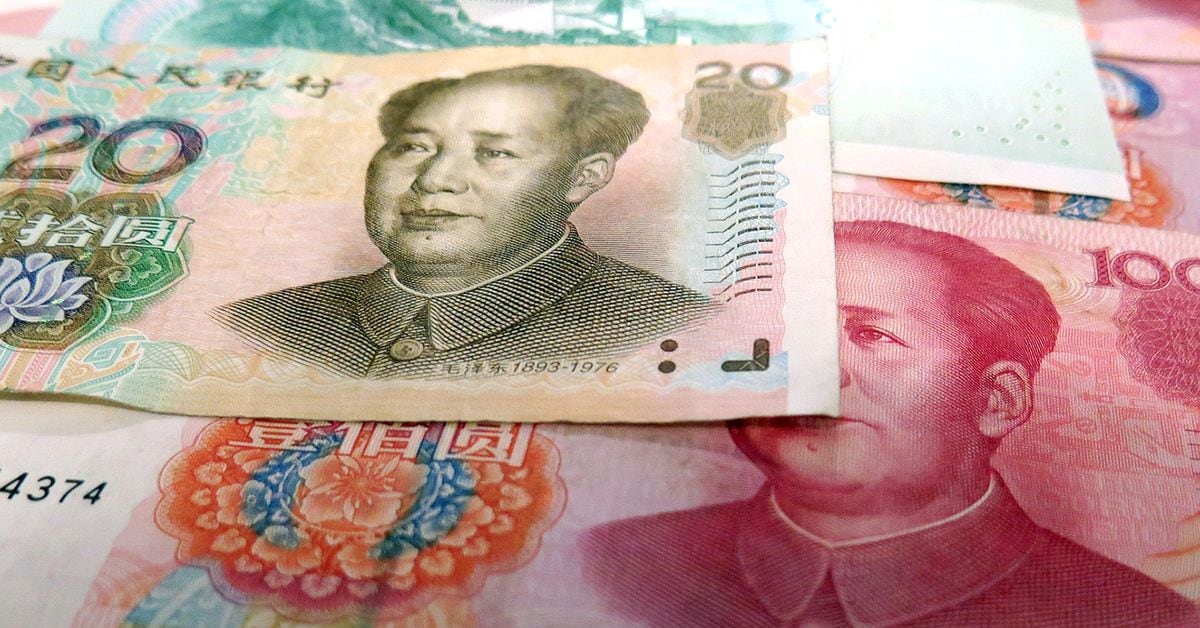Bitcoin
Can Trump do this and what would it mean?

Former US President Donald Trump is rumors is reportedly planning to announce its desire to make Bitcoin a “strategic reserve asset” during an upcoming cryptocurrency conference, a move that could significantly impact the digital asset’s status and global value.
CryptoSlate reported The potential for such a move was raised on July 4 after Bitcoin SoftWar author Jason P Lowery responded cryptically to the thread after confirming that Trump’s team had contacted him. Lowery has now deleted all tweets related to Bitcoin and Trump, something he is known for doing.
Former US President Donald Trump is set to deliver a keynote address at the Bitcoin 2024 Conference in Nashville from July 25 to 27, sparking speculation about a possible game-changing announcement. Dennis Porter, co-founder of the Satoshi Action Fund, claims to have received information from reliable sources suggesting that Trump may unveil Bitcoin as a strategic reserve asset for the United States.
This high-profile move represents a significant shift from Trump’s previous strategy. anti-crypto stancealigning with his recent pro-bitcoin rhetoric and the addition of crypto-friendly Senator J.D. Vance as his potential vice presidential candidate for the 2024 election.
Is there precedent for Bitcoin as a reserve asset?
The concept of reserve assets has evolved significantly over time, with various commodities and currencies playing this role throughout history. Gold played a central role as a reserve asset for centuries, underpinning the global monetary system until the collapse of the Bretton Woods system in the early 1970s. In the modern era, foreign currency reserves, particularly US dollars, have become the predominant form of reserve assets for most countries.
The shift from commodity-based reserves to fiat currency reserves reflected changing economic realities and the need for more adaptive monetary policies. Historical experience suggests that when certain assets are designated as liquidity stocks, institutions tend to accumulate them during crises, potentially disrupting market functioning.
The collapse of the Bretton Woods system marked the end of the post-World War II era of fixed exchange rates and ushered in a new period of floating rates and greater financial globalization. While it created challenges, it also allowed for greater flexibility in international monetary policy and helped economies adjust to external shocks such as the oil crises of the 1970s.
The Impact of Making Bitcoin a Reserve Asset
The US government currently holds a substantial amount of Bitcoin, about 213,000 BTCacquired primarily through seizures from illicit actors. This existing stockpile of $14.3 billion could be leveraged if Bitcoin were declared a strategic reserve asset. Using these seized assets to fund a Bitcoin reserve could effectively utilize these holdings without requiring additional purchases on the open market.
Designating Bitcoin as a strategic reserve asset would have far-reaching implications for the United States and the global financial system. It would encourage Bitcoin’s “digital gold” narrative and increase economic resilience and stability. Such a decision could significantly increase Bitcoin’s legitimacy, attracting new investors and potentially increasing its price.
The geopolitical implications of this change are substantial. Trump has previously warned that the policies against Bitcoin could benefit adversaries like China and Russia, suggesting that embracing Bitcoin could be seen as a strategic advantage for the United States. This perspective aligns with the broader argument that as Bitcoin gains value, countries can compete to accumulate itsimilar to other scarce commodities such as gold, silver, platinum and oil reserves.
From an economic perspective, incorporating Bitcoin into the U.S. Treasury’s holdings could diversify the nation’s assets and potentially hedge against inflation. This approach could reshape monetary policy and influence how other countries manage their own reserves.
The impact on the digital asset market and regulatory landscape would be profound. Such a policy shift could lead to more comprehensive and favorable regulatory frameworks for cryptocurrencies, potentially accelerating their widespread adoption. However, implementing such a policy would face significant challenges.
The technical aspects of securely storing and managing large amounts of Bitcoin at a national level would require careful consideration and robust security measures.
It is important to note that while these potential implications are based on reliable sources and expert opinionsThe actual announcement and implementation of Bitcoin as a strategic reserve asset remains speculative at this point. The full impact of such a decision would only become apparent if and when it is officially enacted and integrated into U.S. financial policy.
How are new reserve assets confirmed?
The process of confirming new reserve assets in the United States involves complex decision-making at the highest levels of government and financial institutions. Traditionally, the U.S. Department of the Treasury, in coordination with the Federal Reserve, has had primary authority over the management of the nation’s reserve assets.
Any significant changes to the composition of reserve assets would likely require congressional approval and involve extensive deliberation among policymakers, economists, and financial experts. The Federal Reserve, as the central bank, plays a crucial role in conducting monetary policy and managing the nation’s reserves. It has the authority to purchase various securities and assets as part of its operations.
However, introducing a new type of reserve asset, especially one as unconventional as Bitcoin, would be unprecedented and would likely require new legislation or significant policy changes. The process would involve a thorough analysis of the asset’s stability, liquidity, and potential impact on the overall financial system, as well as considering geopolitical implications and alignment with national economic strategies.
Would Trump have the authority to declare Bitcoin a reserve asset?
As president, Trump would have significant influence over economic policy, but declaring Bitcoin a strategic reserve asset would likely require a complex process involving multiple government agencies.
The president does not have unilateral authority to make such a decision. It would likely require congressional approval and coordination with the Federal Reserve and the Treasury Department. The process would involve extensive deliberation among policymakers, economists and financial experts.
Any major change to the composition of reserve assets would need to be carefully analyzed for its potential impact on financial stability, monetary policy, and international relations. While a president can set the tone and direction of economic policy, implementing Bitcoin as a reserve asset would require navigating regulatory frameworks, potentially creating new legislation, and gaining support from key financial institutions.
The President’s role would be more to defend and initiate the process than to declare it unilaterally.
Definition of Reserve Assets
Reserve assets are financial instruments that a country’s central bank or monetary authority holds and that can be quickly converted into cash to meet balance of payments needs, intervene in foreign exchange markets, or deal with economic emergencies. These typically include gold, foreign currencies, special drawing rights (SDRs) issued by the International Monetary Fund (IMF), and a country’s reserve position with the IMF.
The primary function of reserve assets is to provide liquidity to manage imbalances in international payments and regulate exchange rates. They also maintain confidence in the national currency, satisfy legal requirements, and can be used as collateral for international loans.
The composition and management of reserve assets play a crucial role in a country’s economic stability and in its relationship with international financial institutions, such as the IMF.
Mentioned in this article
Bitcoin
Bitcoin (BTC), Stocks Bleed as China’s Surprise Rate Cut Signals Panic, Treasury Yield Curve Steepens

Risk assets fell on Thursday as China’s second rate cut in a week raised concerns of instability in the world’s second-largest economy.
Bitcoin (BTC)the leading cryptocurrency by market cap, is down nearly 2% since midnight UTC to around $64,000 and ether (ETH) fell more than 5%, dragging the broader altcoin market lower. The CoinDesk 20 Index (CD20), a measure of the broader cryptocurrency market, lost 4.6% in 24 hours.
In equity markets, Germany’s DAX, France’s CAC and the euro zone’s Euro Stoxx 50 all fell more than 1.5%, and futures linked to the tech-heavy Nasdaq 100 were down slightly after the index’s 3% drop on Wednesday, according to the data source. Investing.com.
On Thursday morning, the People’s Bank of China (PBoC) announced a surprise, cut outside the schedule in its one-year medium-term lending rate to 2.3% from 2.5%, injecting 200 billion yuan ($27.5 billion) of liquidity into the market. That is the biggest reduction since 2020.
The movement, together with similar reductions in other lending rates earlier this week shows the urgency among policymakers to sustain growth after their recent third plenary offered little hope of a boost. Data released earlier this month showed China’s economy expanded 4.7% in the second quarter at an annualized pace, much weaker than the 5.1% estimated and slower than the 5.3% in the first quarter.
“Equity futures are flat after yesterday’s bloody session that shook sentiment across asset classes,” Ilan Solot, senior global strategist at Marex Solutions, said in a note shared with CoinDesk. “The PBoC’s decision to cut rates in a surprise move has only added to the sense of panic.” Marex Solutions, a division of global financial platform Marex, specializes in creating and distributing custom derivatives products and issuing structured products tied to cryptocurrencies.
Solot noted the continued “steepening of the US Treasury yield curve” as a threat to risk assets including cryptocurrencies, echoing CoinDesk Reports since the beginning of this month.
The yield curve steepens when the difference between longer-duration and shorter-duration bond yields widens. This month, the spread between 10-year and two-year Treasury yields widened by 20 basis points to -0.12 basis points (bps), mainly due to stickier 10-year yields.
“For me, the biggest concern is the shape of the US yield curve, which continues to steepen. The 2- and 10-year curve is not only -12 bps inverted, compared to -50 bps last month. The recent moves have been led by the rise in back-end [10y] yields and lower-than-expected decline in yields,” Solot said.
That’s a sign that markets expect the Fed to cut rates but see tighter inflation and expansionary fiscal policy as growing risks, Solot said.
Bitcoin
How systematic approaches reduce investor risk

Low liquidity, regulatory uncertainty and speculative behavior contribute to inefficiency in crypto markets. But systematic approaches, including momentum indices, can reduce risks for investors, says Gregory Mall, head of investment solutions at AMINA Bank.
Low liquidity, regulatory uncertainty and speculative behavior contribute to inefficiency in crypto markets. But systematic approaches, including momentum indices, can reduce risks for investors, says Gregory Mall, head of investment solutions at AMINA Bank.
Low liquidity, regulatory uncertainty and speculative behavior contribute to inefficiency in crypto markets. But systematic approaches, including momentum indices, can reduce risks for investors, says Gregory Mall, head of investment solutions at AMINA Bank.
July 24, 2024, 5:30 p.m.
Updated July 24, 2024, 5:35 p.m.
(Benjamin Cheng/Unsplash)
Fuente
Bitcoin
India to Release Crypto Policy Position by September After Consultations with Stakeholders: Report

“The policy position is how one consults with relevant stakeholders, so it’s to go out in public and say here’s a discussion paper, these are the issues and then stakeholders will give their views,” said Seth, who is the Secretary for Economic Affairs. “A cross-ministerial group is currently looking at a broader policy on cryptocurrencies. We hope to release the discussion paper before September.”
Bitcoin
Bitcoin (BTC), Ether (ETH) slide as risk aversion spreads to crypto markets

Ether, the second-largest token, fueled a slide in digital assets after a stock rout spread unease across global markets.
Ether fell about 6%, the most in three weeks, and was trading at $3,188 as of 6:45 a.m. Thursday in London. Market leader Bitcoin fell about 3% to $64,260.
-

 Videos9 months ago
Videos9 months agoBitcoin Price AFTER Halving REVEALED! What’s next?
-

 Bitcoin9 months ago
Bitcoin9 months agoBitcoin Could Test Record Highs Next Week in ETF Flows, Says Analyst; Coinbase appears in the update
-

 Videos9 months ago
Videos9 months agoAre cryptocurrencies in trouble? Bitcoin Insider Reveals “What’s Next?”
-

 Videos9 months ago
Videos9 months agoCryptocurrency Crash Caused by THIS…
-

 Videos9 months ago
Videos9 months agoThe REAL reason why cryptocurrency is going up!
-

 News9 months ago
News9 months agoCryptocurrency exchanges Binance and KuCoin register with India’s financial intelligence unit as cryptocurrency credibility improves
-

 Altcoin9 months ago
Altcoin9 months agoThe best Altcoins to buy before they rise
-

 Videos9 months ago
Videos9 months agoBlackRock Will Send Bitcoin to $116,000 in the Next 51 Days (XRP News)
-

 Videos9 months ago
Videos9 months agoDonald Trump: I like Bitcoin now! Joe Biden HATES cryptocurrencies.
-

 Videos8 months ago
Videos8 months agoSolana Cryptocurrencies: the future WILL SHOCK you | What comes next?
-

 News9 months ago
News9 months agoTON, AKT, AR expect increases of 15%+ as the market stabilizes
-

 Videos8 months ago
Videos8 months agoBitcoin Whale REVEALS: The 5 Best Coins to Make You a Millionaire!





